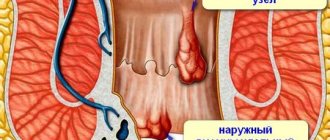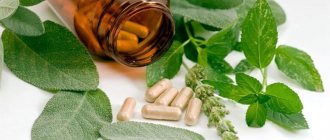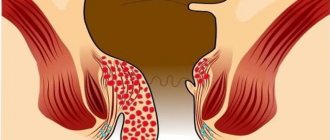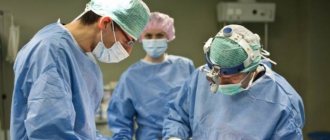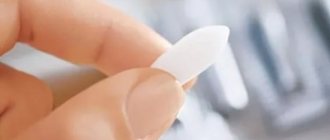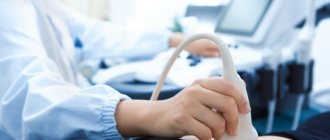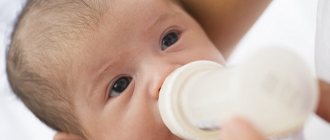Before removing hemorrhoids at home, it is recommended to consult a doctor. Hemorrhoids are a disease that occurs in the rectum and anus. It manifests itself as swelling, thrombosis, inflammation and tortuosity of the hemorrhoidal veins, which form nodes around the rectum of the anus.
In medical practice, it is customary to distinguish 4 stages of hemorrhoids. This classification is relevant for internal hemorrhoids. When nodes are located externally, it is customary to take into account not the degree of their enlargement, but the presence or absence of complications.
Treatment methods for external hemorrhoids
This disease can be treated in several ways:
• medicinal - medications (ointments, tablets);
• operative – surgical interventions;
• cryotherapy;
• sclerotherapy;
• laser coagulation;
• traditional methods.
drug treatment
surgical intervention
laser coagulation
ethnoscience
First of all, in order to get rid of external or internal hemorrhoids, it is necessary to remove harmful foods from the diet and eliminate habits that aggravate the disease. Some rules must be followed:
• give up alcohol;
• follow a diet (do not eat fried, smoked and spicy foods);
• lead an active lifestyle, walk and swim more;
• do not lift heavy objects;
• refuse hard physical labor.
How to get rid of hemorrhoids at home
So, how to treat hemorrhoids at home so as not to develop the disease? Treatment of hemorrhoids, regardless of the stage of its progression, must be comprehensive. Therapy includes the following measures:
- nutrition correction;
- compliance with the drinking regime;
- physiotherapy;
- herbal baths;
- the use of antihemorrhoidal ointments and other drugs.
When self-medicating, people most often use traditional medicine, which has many recipes and recommendations for each specific type of pathology. However, it is better to get professional advice from a proctologist before starting therapy.
Conservative treatment
Drug treatment is carried out using tablets, ointments, and gels. Rectal suppositories are usually not used for external hemorrhoids. For treatment to be effective, you need to find out what caused the disease. It is necessary to consult a doctor, carry out diagnostic procedures, take the necessary tests, and then begin treatment.
Application of ointments
To get rid of the emerging tumor, ointments are used that have an anti-inflammatory and absorbable effect, as well as reduce pain.
1. Proctosedyl ointment - contains hydrocortisone. The drug relieves inflammation, itching, burning, and has an anesthetic and bactericidal effect. They can treat external and internal hemorrhoids.
2. Proctosan - contains bismuth, has a hemostatic effect. Helps relieve itching, burning, and discomfort. Copes well with hemorrhoids and fissures.
3.
Heparin ointment - it can be used during pregnancy and lactation. The ointment contains heparin (an anticoagulant), relieves inflammation and resolves bumps.
4. Troxevasin - strengthens the walls of blood vessels and instantly relieves inflammation. It helps perfectly with weeping wounds and helps them heal quickly.
5. Relief - it contains shark liver fat. It is considered an excellent immunomodulator, quickly relieves itching, inflammation, and heals cracks.
6. Aurobin - the drug contains triclosan, has a local anesthetic and antibacterial effect.
Pill use
The greatest effect will be obtained when the patient uses tablets in parallel with ointments:
1. Pilex - tones the venous plexuses, reduces inflammation and has an antibacterial effect.
2. Detralex - made from plant components. The drug helps reduce venous stagnation.
3. Asklesan A is a dietary supplement that increases the tone of blood vessels and stimulates blood circulation in hemorrhoids.
What are hemorrhoids
Hemorrhoidal venous plexuses are located in the anal canal, the submucosal layer of its wall. There are internal and external. The internal veins are located more proximally from the dentate line of the rectum, the external veins are located distally.
Hemorrhoids are pathologically altered veins of the anus and rectum. Formed as a result of circulatory disorders in the veins of the terminal part of the large intestine.
Even in a healthy person, hemorrhoids expand over time. Enlarged veins without clinical manifestations are not a disease!
Some people develop enlarged venous plexuses during fetal development. These people are at high risk of developing internal hemorrhoids.
In accordance with the localization of the venous plexuses, two types of hemorrhoids are distinguished:
- outer;
- interior.
An external hemorrhoid is formed when the external venous plexus expands. It looks something like this:
- Formation of 3 mm or more. The sizes depend on the intensity of blood supply.
- The skin covers the dilated vein.
- Located along the outer edge of the anus.
Internal hemorrhoids are covered by the mucous membrane of the rectum and are located in the intestinal lumen.
Hemorrhoids kill the patient in 79% of cases
Location of hemorrhoids
Why do bumps appear?
The formation of hemorrhoidal cones largely depends on lifestyle. People with sedentary jobs who do not play sports or, conversely, lift heavy objects, are susceptible to the disease.
Other risk factors for developing hemorrhoids:
- irrational diet (frequent intake of fatty, fried foods, low fiber content in the diet);
- bowel dysfunction (frequent constipation or prolonged diarrhea);
- horse riding lessons;
- alcohol abuse;
- obesity;
- in women – pregnancy and childbirth.
All these factors lead to impaired blood circulation in the venous plexuses. The vessels dilate and hemorrhoidal cones form.
Why do nodes fall out?
Prolapse of hemorrhoids is the exit of pathologically altered veins outside the anal canal during physical activity or straining. Develops in advanced stages of chronic internal hemorrhoids.
Loss occurs as a result of the progression of an increase in vascular formations and the development of degenerative changes in the ligamentous apparatus. The anal sphincter cannot hold the node, which is why it falls out of the lumen of the rectum.
The patient can see the formations independently.
Thrombosis
Thrombosis of the hemorrhoid is a complication of hemorrhoids, which is manifested by blockage of the lumen of the vessel with a blood clot. It develops in about a third of patients.
Depending on the location, thrombosis of the external hemorrhoidal node, internal and combined forms are distinguished.
Classification depending on severity:
- 1st degree – thrombosis without signs of inflammation;
- 2nd degree – the inflammatory process joins;
- Grade 3 – inflammation spreads to the subcutaneous fatty tissue in the perianal area.
When hemorrhoids are complicated by thrombosis, the patient experiences intense pain in the anus, which is constantly present and is not associated with bowel movements. The node increases in size and becomes denser.
Inflammation
Inflammation of hemorrhoids is characterized by swelling and redness of the skin in the perianal area. The patient is concerned about the pain of the formations, which intensifies after touching them. Discomfort increases after defecation.
In advanced stages, inflammation spreads to surrounding tissues. When touching the anus or digital examination of the rectum, severe pain occurs.
Surgical treatment
For hemorrhoids, surgery is rarely used. Surgical removal is done in cases where all other methods do not help, if complications arise or during an exacerbation of the disease.
In case of hemorrhoidal thrombosis, thrombectomy is used. The procedure involves cutting the node and removing the resulting blood clot. This method will not completely get rid of the disease, but will help to better cope with it using conservative methods of treatment. The procedure is performed under local anesthesia.
In protracted forms of this pathology with frequent relapses (bleeding of nodes, thrombosis), hemorrhoidectomy (excision) of nodes is used. The operation is performed in a hospital under local anesthesia and takes no more than 20 minutes. It is done on an empty stomach; a cleansing enema must be done on the day of the procedure and the night before.
Excision of nodes helps to alleviate the patient’s condition and completely get rid of the problem. Complete healing of external hemorrhoids usually occurs within 2 weeks.
Is it possible to do this without surgery?
The big fear of treating hemorrhoids is surgery, so patients are afraid to seek help from doctors. Varicose dilation of the cavernous vessels of the rectum can be treated without surgery, but subject to important rules. First of all, the patient must adhere to the following diet:
- Eat boiled chicken, turkey or rabbit meat.
- Eat more plant proteins.
- Vegetables, fruits, and berries are required as part of the diet.
- Drink herbal teas with a mild laxative effect.
A proper diet will help normalize stool, and the hemorrhoid will return to the rectal lumen in time.
Pay attention to physical activity during the day: strength training, deep squats and sudden movements. Engage in physical therapy that does not cause stress, for example, light jogging or swimming, intimate gymnastics.
Modern methods of treating external hemorrhoids
To cure external hemorrhoids, you can use minimally invasive methods: cryotherapy, sclerotherapy, laser coagulation. Such methods are much better than surgical interventions. They do not require long-term recovery and do not have much effect on the body.
Cryotherapy
In modern medicine, cryotherapy (cryodestruction) is widely used to remove external hemorrhoids. This is the treatment of nodes with liquid nitrogen. The procedure is minimally invasive and almost painless.
Liquid nitrogen is applied to the affected area; upon its contact with tissues, coagulation and death (falling off) of the nodes begins, this occurs on days 5–7.
Cryotherapy is suitable for the first three stages of hemorrhoids, which have no complications. One disadvantage is that the disease may recur after some time. Therefore, it is necessary to undergo periodic examinations in order to remove the newly appeared formation in time.
Sclerotherapy
The most effective and common method is sclerotherapy to remove hemorrhoids. The method involves injecting a special substance, a sclerosant, into the hemorrhoidal cones. It causes the process of sclerosis and inflammation in the lumen of the vein, after which the walls of the nodes stick together and grow together. About a week after the procedure, the node disappears.
Scleropathy is good to use to stop bleeding if hemorrhoids have worsened, as well as before surgery. Treatment with sclerosing drugs can be carried out in the first 3 stages of the disease. The procedure lasts about 30 minutes, the result lasts for 1 year, then nodes may form again.
There are several contraindications:
• scleropathy does not treat stage 4 hemorrhoids;
• anal fissure;
• mixed hemorrhoids;
• high blood pressure;
• presence of sharp nodes.
Laser coagulation
Laser therapy can help get rid of hemorrhoids. It is one of the effective methods. Using a laser, it is possible to remove the formation in the first 2 stages of the disease. This minimally invasive method at stages 3–4 will not give an effective result, and infectious processes around the anus require advance medical treatment.
The laser beam is capable of gently cauterizing and cutting tissue, so it is used for easier treatment of the disease. The procedure involves carefully cutting off the hemorrhoid using a focused laser beam. The tissues quickly fuse together, and therefore bleeding is eliminated.
The procedure takes about 15 minutes, then it is advisable to lie down for half an hour - and you can go home.
Treatment of external hemorrhoids with traditional methods
Many people remember about hemorrhoids only during an exacerbation, when inflammation and bleeding appear after bowel movement. But at the first symptoms it would be advisable to consult a specialist. But if visiting a doctor is impossible for some reason, you can try traditional medicine methods.
You can get rid of external hemorrhoids with various lotions and ointments, which consist of natural ingredients.
Herbal baths
Different types of herbs are used for infusions: chamomile, calendula, sage, string. The herbs need to be brewed in boiling water (you can add propolis) and leave for about 30 minutes. The procedure is done before bedtime 3 times a week. Suitable for the treatment of external hemorrhoids and anal fissures.
Plantain leaves have antibacterial, antispasmodic and anti-inflammatory effects.
• Plantain can be used as a compress. The leaves are washed, finely chopped and crushed a little. Pour a boiled glass of water and leave for 20 minutes. Then the contents are laid out on gauze, rolled up and applied to the affected area. The procedure must be done for at least 10 days.
• Plantain infusion can be consumed as tea. You need 2 tbsp. l. Pour the crushed plant into a glass of boiled water and leave. Drink warm tea 3 times a day before meals, 75 ml.
Clay for hemorrhoids
An excellent folk remedy for external hemorrhoids is clay. It is diluted with water to a certain consistency (like thick sour cream). Apply to the painful area in the morning and evening for 2 hours. The manipulation is carried out for 10 days.
Dandelion root infusion
2 tsp. Infuse crushed dandelion root for 8 hours in a glass of cool boiled water. Drink the resulting infusion 4 times a day, 50 ml before meals.

